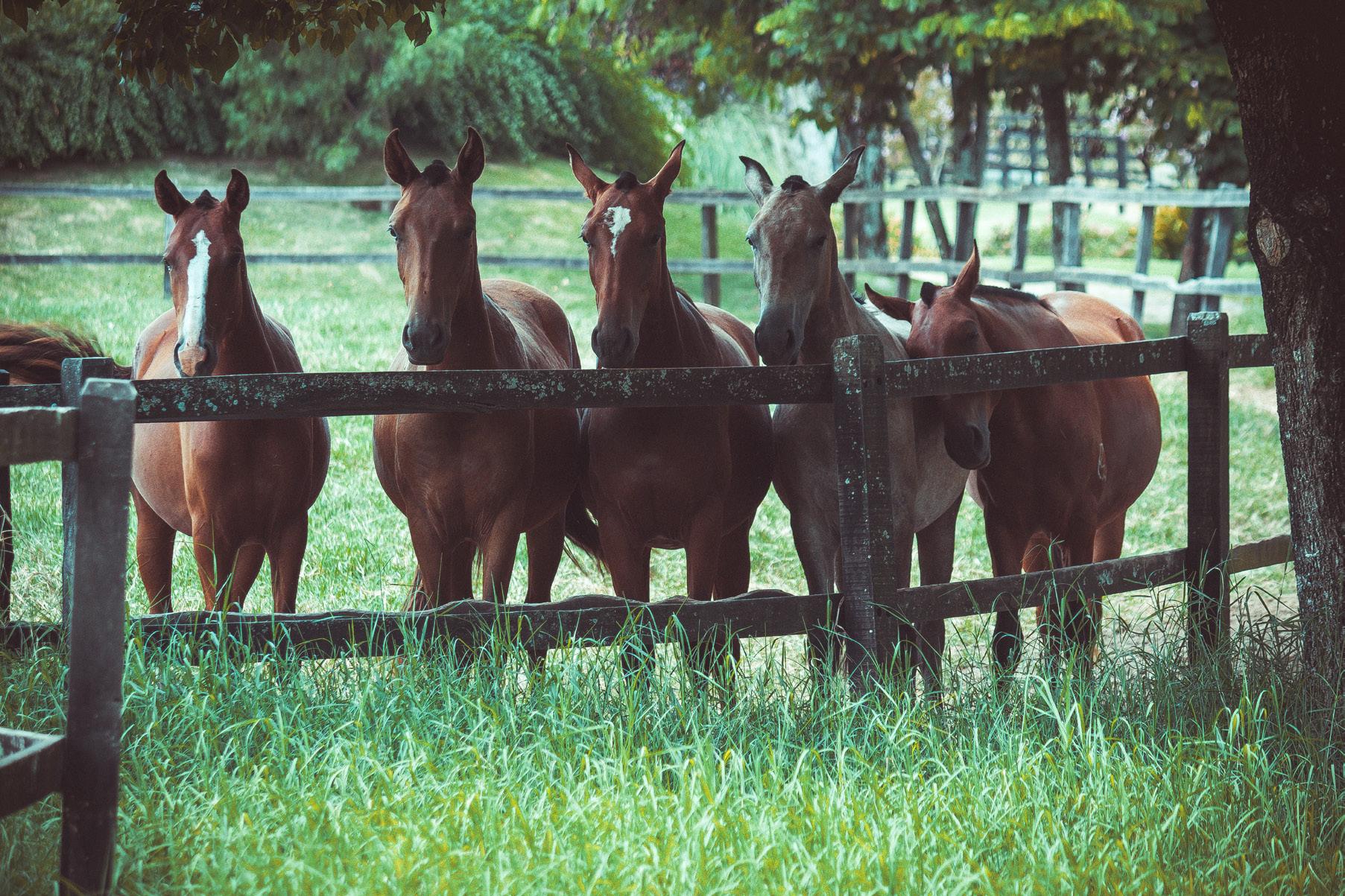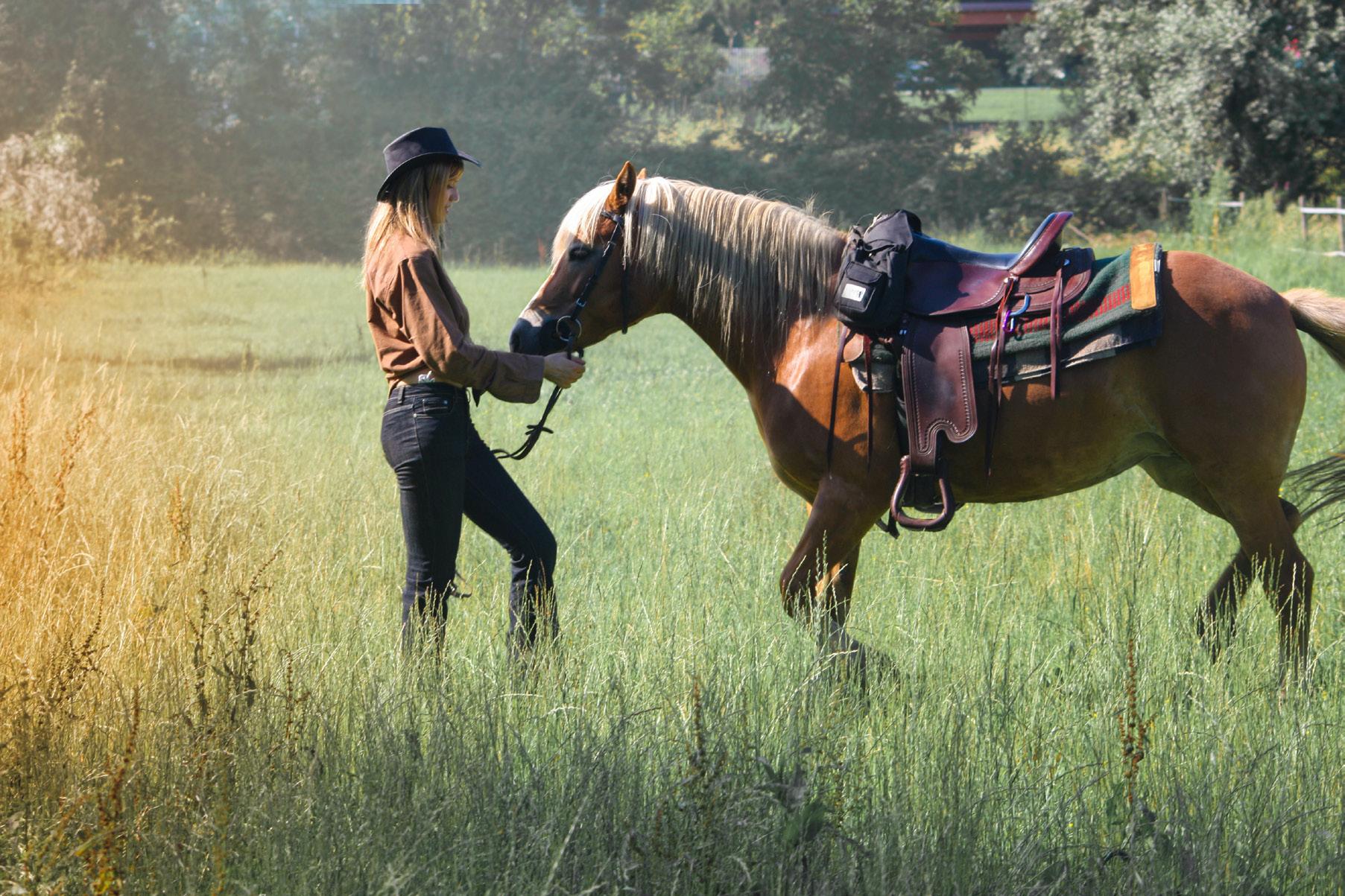EDITION 16 | SEPTEMBER 2022





And welcome to our Breeds’ Special Edition!
We’re very excited to be delivering you all the breeds we’ve covered so far in HQ Pony Magazine in one splendid edition.
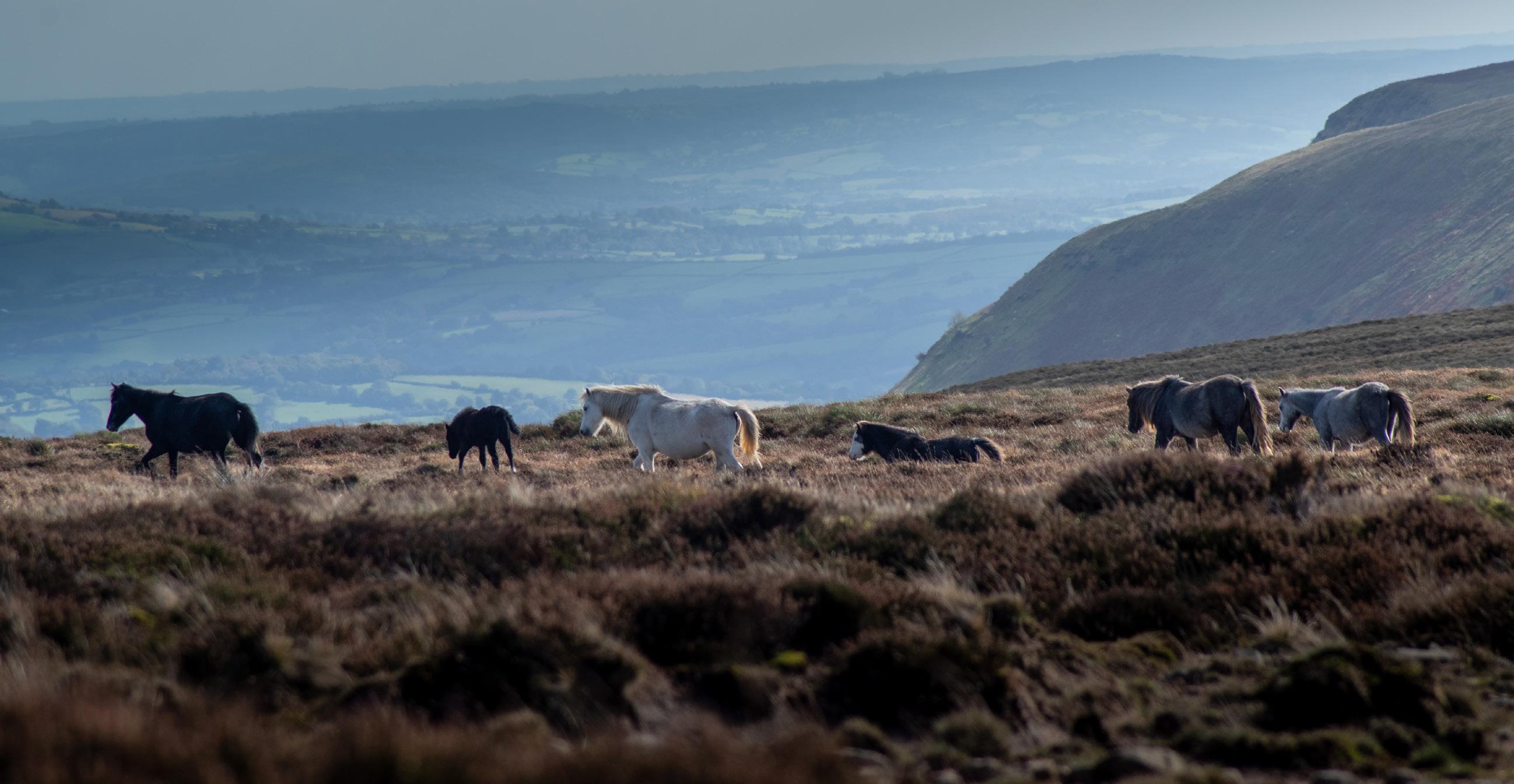
The question is, which breed is your favourite? And which ones should we be featuring in the future?
Get in touch and let us know!
Until next time, happy horsing!
With much love, Lizzie and the HQ Pony Team xxx
We’d love to hear from you and receive your photos, drawings or pony-related thoughts. To get in touch send an email to lizzie@hqmagazine.co.za and we’ll get back to you!

We take pride in our quality, personalised friendly service and uniqueness. No order is too big or too small. Embroidery is offered on all items. Let us design your yard’s numnahs, shirts, daysheets and ears
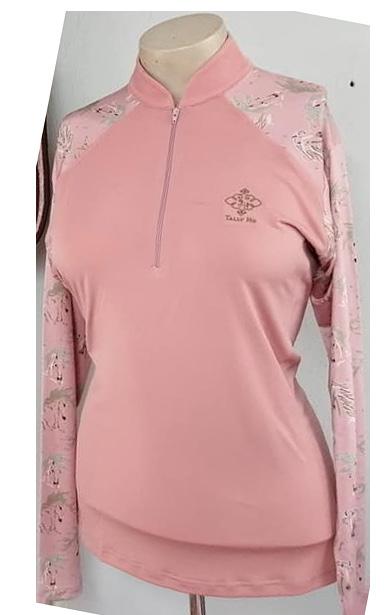

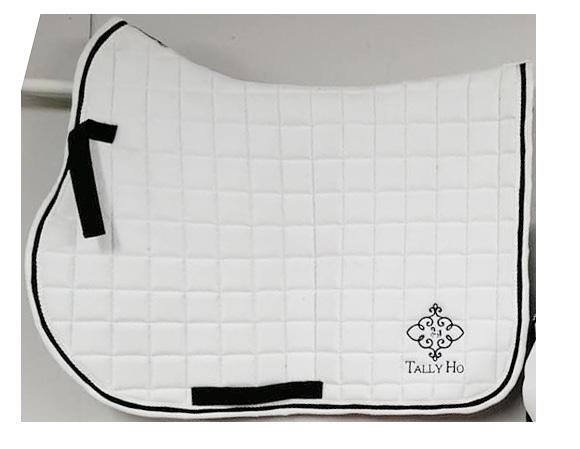

Whether it's for shows or daywear this is the place to buy your goods. We have stunning prints, colours, shapes and designs to choose from.

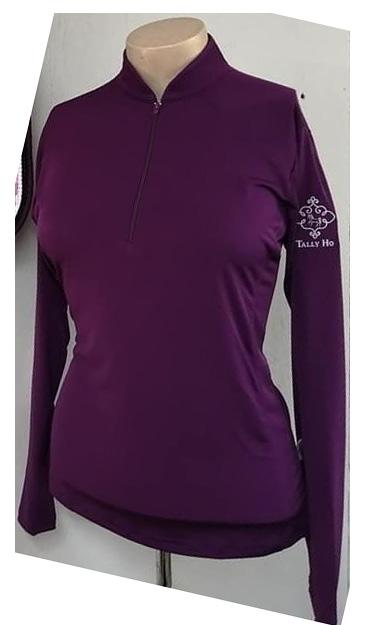

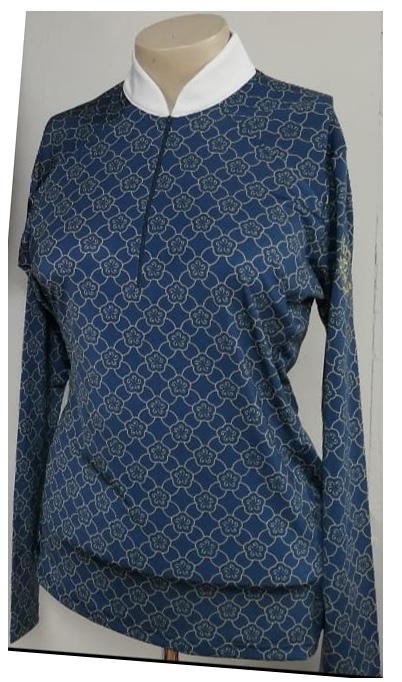
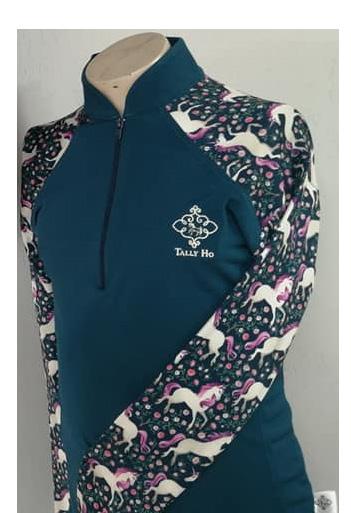





We will be kicking off our breed series looking at breeds of horses and ponies around the world with a look at some of the more ‘primitive’ species of horses and ponies. Our first breed for the series is the fascinating Przewalski’s horse.
Przewalski is pronounced shuh-VAL-skee!

Przewalski is a Polish surname. It was the surname of the man who is said to have identified the horse.
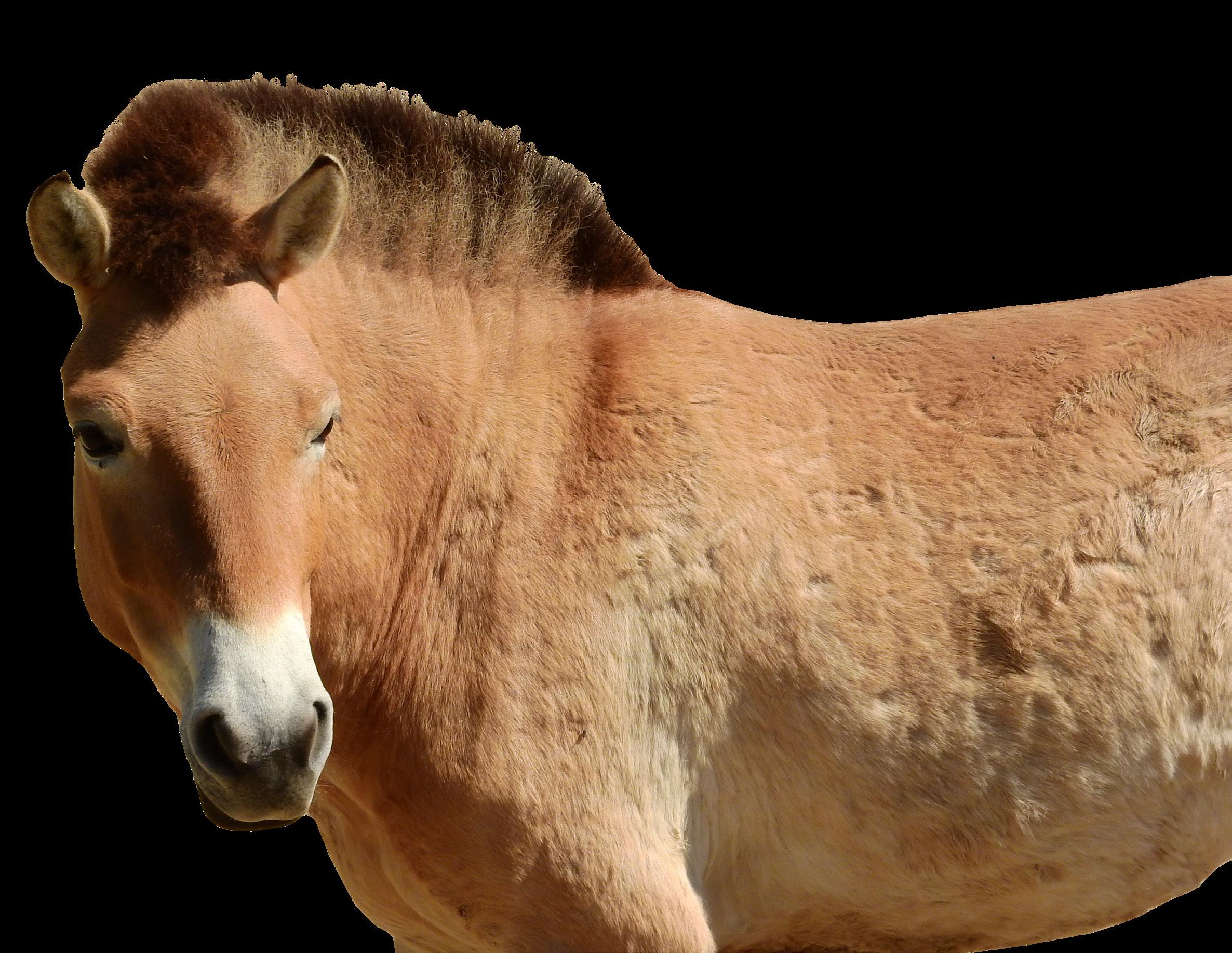
Przewalksi’s horses come in various shades but are considered dun in colour. They have a lighter underbelly and a white nose. Interestingly they have no forelock and a mane that stands up like the mane of a zebra. They are one stocky little animal with large heads and huge, thick necks. They can survive temperatures well below freezing because of their thick, shaggy coats.
The zebra is a cousin of Przewalksi’s horse.

The first known cave paintings of Przewalksi’s horses have been found in Spain and France and are approximately 20 000 years old!
Przewalksi’s horse is believed to have roamed the grasslands and deserts of the Central Asian steppes for more than 160,000 years. The famous Mongol warrior Genghis Khan was said to have spotted these horses on his conquests. Mongolians call these horses takhi, which means spirit, or worthy of worship. This wild horse is extremely important to the Mongolian people. Other names for this horse include the Mongolian Wild Horse and P horse.
Przewalksi’s horse is the only surviving truly wild species of horse in the world, and has only been able to survive due to huge conservation efforts over the last 50 years. Other types of horse that are thought to be ‘wild’ are actually descendants of domesticated horses that were allowed to roam free and continued to make families. Examples include the American Mustang (think of the animated movie Spirit, ‘Spirit, Stallion of the Cimarron’) and Australian Brumbie. The Przewalski’s horse is actually considered a different species entirely to the domesticated horse. Although there are some of these cute, stocky horses in zoos around the world, they have never been tamed. They are considered to be too wild!
In 1969 the Przewalski’s horse was declared extinct in the wild, which means that a few horses still existed, but none were free to roam in their natural habitats. Mongolian children had to hear about this incredible wild horse from their parents and grandparents. At one stage, only 12 horses remained in the wild. Thankfully there are now over 1900 of these amazing creatures in existence today and over 300 have been reintroduced to their native Mongolian habitat. When these new horses landed on the Mongolian plains, it was said that local Mongolians rode hundreds of miles to witness this historic event. This shows just how special the Wild Mongolian horse is to the people of Mongolia.

The San Diego Zoo has actually cloned a Przewalski’s horse from a horse that was alive in the 1960s. His name is Kurt, and he is the first cloned Przewalski’s horse in the world! It is hoped that Kurt will help save the species as his genes will introduce more variety into the current gene pool. As an added bonus, Kurt is incredibly cute!

The second breed in our series is the Mongolian Horse, another horse native to East Asia.
These Mongolian Horses range in size from 12-14 hands and despite their small stature they are able to carry adults easily. These little horses are also hardy enough to survive temperatures ranging from 30°C in the summer to -40°C in the winter.
It is thought that humans have been domesticating and riding the Mongolian horse for over 4000 years.
There are four main types of Mongol horse: desert, mountain, steppe and forest. Each has characteristics that make it especially suitable for its environment and the needs of the local people.

The Mongolian domesticated horse is essential to Mongolian culture and way of life. Some Mongolian people of today still move in nomadic groups that live off the land and it is said ‘a Mongol without a horse is like a bird without wings’.
Horse racing is a popular sport in Mongolian culture and despite the Mongolian horses’ small size they have great stamina and can gallop for 10km without a break. Mongolian children are exceptional horsemen and are often chosen to race their families’ horses because of their light weight. Some of these jockeys are as young as 6 years old!
It is thought that the stirrup, which is believed to have been created by the Mongolian Emperor Genghis Khan’s armies, was a large contributing factor to these armies’ success in conquering lands from East Asia, right up to Vienna in the 12th and 13th centuries. The stirrup has changed very little, even today.

A popular tourist attraction is the Mongol Derby, which is a 1000 km route, raced in just 10 days. Riders from all over the world compete in the Derby every year.
Do you know someone who has raced the Mongol Derby?



In our horse and pony series, we now move to the British Isles, where we will start this section with the Welsh Pony. In this article, we look at the different types of Welsh Ponies and go over some fun facts about this special breed.
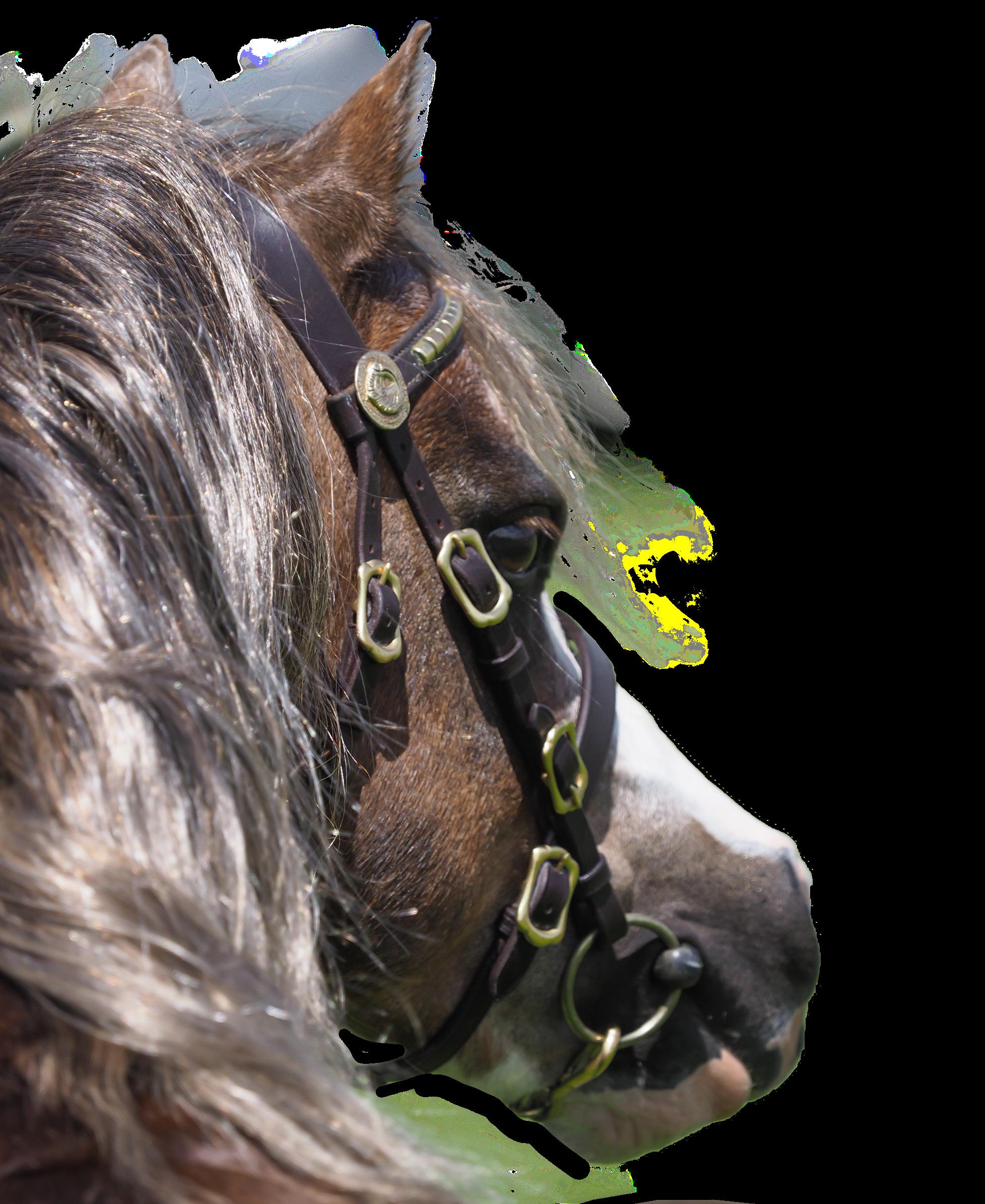
The Welsh Mountain pony is believed to have descended from the Celtic pony and is thought to have existed in Wales for over a thousand years.
King Henry the VIII (15091547) ordered that all horses that couldn’t be used in war needed to be eliminated, as he felt that they were useless if they weren’t helpful for battle. Thus, he instructed that all stallions under 15 hands high and mares under 13 handshigh must be culled. Luckily some escaped into the wild, and this tough existence allowed the intelligent and hardy ones to survive and keep this pony breed going.
Many multiple rosette winning show ponies and beloved family members are passed on from one generation to the next.

The Welsh breed is divided into four segments:
The Welsh Mountain Pony (up to 12 hands high)
The Section A is the smallest of the Welsh breeds and is also known as the Welsh Mountain Pony. These ponies are popular with children and small adults. The introduction of Arab blood gave the pony one of its most commonly identified characteristics, the refined, concave head.

The Welsh Pony (up to 13.2 hands high)
Welsh Section Bs are similar in characteristics to Section As, but the most notable difference is their height, which is allowed to be up to 13.2 hands high. They are more of a riding pony type, with a good lower leg action and a more refined build. Arab, Thoroughbred and Hackney blood helped refine the Section B, and add a little bit of height. The Section B is an incredibly versatile pony and excels in many different disciplines.
the Welsh Pony of Cob Type (up to 13.2 hands high)
The Welsh Section C is part cob, part pony and very suited to a number of disciplines. It is thought that the Section C came about by the crossing of Section As and Section Ds (cobs) and it is the least common type of Welsh Pony. They are bigger and more muscled than a Section B but are still athletic. They are known for being good jumpers, with a particular affinity for working hunter classes and are fantastic at harness work.
the Welsh Cob (over 13.2 hands)
The Welsh Section D is otherwise known as the Welsh Cob. The breed category has no height limit, but these ponies must exceed 13.2 hands high, although retaining pony characteristics is preferred even at this bigger size. The Cob has exceptional substance but still retains its athleticism.

During the 15th century, horses of Cob type were also used as ‘rounceys’. A rouncey is a cheaper warhorse used by squires, often accompanying the much more expensive warhorses known as ‘destriers’, into battle. Small-sized rouncey horses were preferred by mounted archers.
The Welsh Cob is essential to Welsh Culture, and the Cob classes at the Royal Welsh Show have some of the most loyal supporters.

We will be continuing our pony breed series by moving around the British Isles to a rare and unique pony, the Exmoor Pony. The Exmoor is the oldest UK breed classified under the nine breeds native to the British Isles. These ponies roam semi-feral across the moorlands of the Exmoor National Park.
The Exmoor is thick-set, small, and brown or dun in colour with the characteristic pale or “mealy” nose. They are so sturdy that children and adults can ride them.

It is thought that the first wild ponies moved to Britain from Alaska 130,000 years ago. This was so long ago that the ponies must have existed around the time of the mammoth and the sabre-toothed tiger.

When the Celtic people settled in Britain, they tamed and used the ponies to pull their chariots. There are mentions of ponies on Exmoor in the Doomsday Book - Britain’s oldest ever public record. The book was written in 1080 - a whopping 941 years ago!
World War Two then nearly wiped out the breed. A combination of absent owners, poverty, and the use of the moorlands for troops resulted in there being only 50 ponies left after the war. Passionate breeders desperately tried to save the breed, and ponies were even exported to Canada and the USA. Nowadays, there are just under 500 recorded in the UK, and they are still considered an endangered species.
The Exmoor is superbly adapted to the wild, able to with stand the UK cold and rain. They have thick eyelids called “toad eyes” and very thick forelocks that help protect them. The “toad eye” along with the thick forelock helps the rain run directly off the face. Their tails also grow short hairs on the top, called a “snow shute.” To complete their protection systems, their coats have two layers, kind of like thermal underwear! Every year in the breeding season, the native herds are rounded up by the local farmers to be inspected and some are selected to be sold as recreation ponies.
One of the UK’s oldest and most beloved ponies definitely deserves to be preserved. They are hardy, great children’s ponies and have lovely quirky characters.
We will be continuing our pony breed series by moving to Northwest England, where a rare and old pony breed originated, the Fell Pony.
The Fell Pony originated in the ‘fells’ of Northumberland, Cumberland and Cumbria. A fell (from the Old Norse word fjall, ‘mountain’) is a high and barren landscape feature, such as a mountain or moor-covered hill. The Norse people were thought to have arrived in Britain in about 925 AD and originate from Norway.
The original Fell Pony is thought to have resembled the Exmoor pony, but the Romans are said to have brought Friesians into the country, which they proceeded to cross-breed with the native Fells. This changed the appearance of the Fell Pony dramatically. The Fell Pony still bears a remarkable resemblance to the Friesian. It is, in fact, thought that the Fell Pony inherited its ground covering trot from the Friesian influence.


The Vikings used the Fell Ponies to plough the fields, as well as for hunting and pack work. Over the centuries, through this work, the breed came to be revered for their stamina and ability to carry heavy loads over long distances. They were ultimately considered vital in moving goods throughout the trade routes in Britain. As Great Britain developed, the ponies were needed to transport copper and iron from theNorth to the smelting works in Newcastle and would return with coal. They were even used in the mines as pit ponies, hauling coal from underground back up to the surface!
The pony in its pure form started to die out due to cross-breeding and war, but in the late 1950s, pleasure riding started to gain popularity again, and the breed thankfully saw a rise in popularity.

The Fell pony is incredibly versatile and is used in a number of disciplines today. The breed’s lovely temperament makes it popular among Riding for the Disabled Programs (RDA), and children and adults alike enjoy this remarkable breed. The breed is known for being levelheaded and exceptionally talented, and sure-footed in tricky terrain.
The Queen of England was spotted on one of her favourite Fell Ponies Farleton Fern, at the ripe old age of 94 – emphasising their safe nature! Fern was bred in Cumbria by Claire Simpson. Her Majesty is a patron ofthe Fell Pony Society, which aims to protectthe breed.
Breed purpose: Mining, grazing, riding
Size: Up to 14.2hh (148cm)
Coat colour: Any apart from piebald, skewbald, spotted or blue-eyed cream
The New Forest Pony is a fascinating breed native to the United Kingdom. The breed was first written about and described in 1066, but it is believed that the ancestors of the New Forest Pony roamed the woods and heath of the New Forest before the last Ice Age.

The New Forest is an accessible piece of land in Hampshire that was once crossed extensively by travellers on horseback. Although later the New Forest became a royal hunting ground under William the Conqueror, forest-dwellers known as Commoners had the right to put their ponies out to graze, and the forest still supports these herds of feral ponies. Varieties of ponies living together in this way and mixing with the horses and ponies of travellers, meant that lots of cross-breeding happened between mares and stallions. This created quite a diverse group of ponies.
As the ornament of a forest scene, he is always picturesque
- William Gilpin, 1791.
Then, in 1765, a Thoroughbred stallion called Marske was brought to the forest after being sold by his owner, the Duke of Cumberland. He was the father of Eclipse, possibly the greatest racehorse of all time. Marske lived and bred with the forest mares for a short time before returning to stud. Later in 1889, Queen Victoria lent an Arab and a Barb stallion to improve the herd. Subsequently, Highlands, Fells, Dales, Dartmoors, Exmoors and Welsh ponies were introduced. Finally, another major influence on the breed was the polo pony stallion, Field Marshall, out of a Welsh pony mare.
All of this just goes to show how many different breeds have been involved in creating the New Forest Pony.
In 1910 a formal studbook was created, and now Purebred New Forest stallions approved by the Breed Society run out on the Forest with the mares for a short period each year.

In the 1940s, there were fewer than 600 ponies left, but careful breeding programmes have seen the numbers increase significantly. There are currently over 3000 ponies in the New Forest Park, where they roam freely in small herds. They are a popular tourist attraction, with many people stopping to view them in their natural habitat.
Twice a year, all the ponies are rounded up by agisters and helpers on horseback and are counted, dewormed and checked for health problems.
Ponies are then selected to be sold, most frequently at the nearby Beaulieu Pony fair, attracting large crowds of prospective buyers.
They make excellent partners for riders of all ages and abilities and are strong enough to be ridden by adults. Their canter is their best gait, and they are extremely sure-footed. They are known for having fantastic temperaments and being intelligent and versatile.
Hands up if you want to ride a New Forest Pony?! We know we do!

An exceptional all-rounder with an endearing character
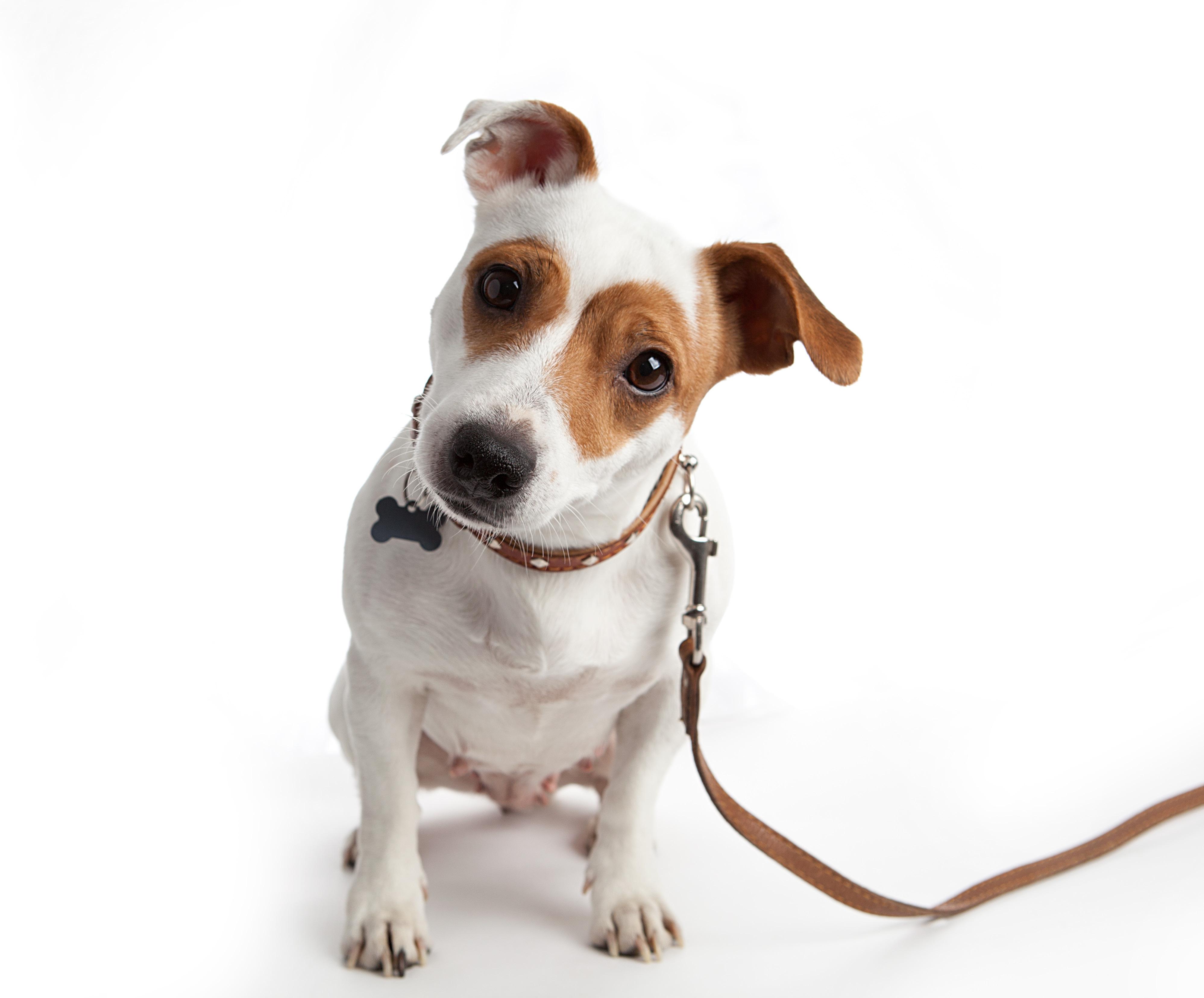
Name: Shetland | Breed purpose: Farm work, riding
Breed size: Up to 10.2 hands | Coat colour: Any except spotted Place of origin: Scotland | Ancestors: Unknown but has links to the Icelandic horse
Continuing our tour around the British Isles profiling the breeds native to the area, we bring you the Shetland Pony. The Shetland is arguably one of the cutest pony breeds native to the United Kingdom and is a common choice for first ponies for young riders in the UK.

The Shetland pony has been roaming the moors of the Shetland Islands, which lie north of mainland Scotland since the Bronze Age. It is thought that the ponies are a hybrid of the native Highland-type pony of Scotland with a Scandinavian or Viking breed brought onto the Islands by Viking invaders in the 9th century CE. Shetland ponies are wonderfully adapted to the harsh, unforgiving north of Scotland, and, whilst nobody really knows for certain how they ended up on the Shetland Islands – they certainly survive there remarkably well.

Ponies and their foals grazing on the Shetland moors are a common sight in the Shetland Islands. The ponies roam free but are all owned by local crofters (farmers), who keep a close eye on them.
Originally Shetland ponies were used to pull carts and carry peat, plough land, and carry coal and other items. Then, during the Industrial Revolution, the use of children for work in the coal mines was forbidden, and thousands of Shetland ponies were sent to mainland Britain to be pit ponies. Their docile and easy natures, alongside their incredible strength for their size, meant they were perfect for work in the coal mine. However, the work was hard and miserable, with the ponies working many hours a day underground pulling loads of coal. Many of these ponies died young. Coal mines in the eastern United States also imported some of these ponies.
Due to this use, interest in the pony was huge at the time and thousands of ponies left the Shetland Islands. This meant that local stock was declining in quality, as the best stallions were exported to meet the demands of the commercial markets.

A steady decline swiftly followed this boom in popularity. However, the wealthy continued to greatly enjoy the ponies, and Elizabeth, the future Queen of England and her siblings, rode Shetland ponies in childhood. After the 1930s, the demand for these ponies completely crashed as the Shetland pony was replaced in popularity by the Welsh pony, and the combustion engine was invented, which meant they were no longer needed for mining and transportation.
The establishment of the Shetland Pony Stud Book Society was a major factor in saving the breed. Since the stud book only accepted ponies less than 107cm high, it assured breeders were not tempted to breed bigger Welsh-typed children’s ponies.
Local fishermen in the Shetland Islands used the ponies’ tail hairs for fishing lines!

The thick-set body is perfectly adapted to digesting grass that is low in nutrients.
The thick coat is double-layered and allows the pony to keep warm during the harsh Scottish winters.
Short legs and rounded feet make the pony surefooted as it walks up and down the mountains’ slippery, stone-covered slopes.

Our tour of the native breeds takes us to the popular Connemara Pony of Ireland. The Connemara Pony is Ireland’s only native breed, and it is, in fact, supposed that the breed did not originate in Ireland after all.

The lands of Connemara, West Ireland, are mountainous, harsh and desolate and this tough terrain forced the native Connemara pony to adapt to survive. It is thought that Celtic warriors brought their native dun ponies, likely of Asian descent, over to Ireland around 2 500 years ago. Other theories point to the ancestors of the modernday Connemara being brought over by Viking invaders. Legend also has it that when the Spanish Armada sank off the Galway coast in the 16th Century, the horses swam to shore and bred with the native ponies running wild in the mountains, further adding to the gene pool.
The Connemara Pony is a remarkable showjumper, with many ponies being recorded to jump over 7.2 foot (2.19 m) in puissance competitions.


As you can perhaps imagine with this talent, there is an incredibly long list of famous Connemara’s, with arguably the most famous pony in the world being the 14.2 hand partbred Connemara, Stroller. Stroller started out his world-famous journey by winning the 1967 Hickstead Derby with his 20-year-old rider Marion Coakes. Theirs was the only clear of the day, with 44 horses entered. This Connemara pony bought to be her junior horse took Marion to international stardom. Stroller and Marion did not stop there. The following year they won Individual Silver in the Olympic Games in Mexico. Stroller is the only pony to have competed in the Olympics and also the only pony to have won the Hickstead Derby. This iconic pony lived until he was 36 years old.
The modern-day Connemara stands between 13 and 15 hands high. The breed is so popular it has been established in over 17 countries, including South Africa. The largest display of the finest Connemara Ponies in the world takes place in Clifden, Connemara, in August of every year. Guests from all over the world attend this show and can delight in the Connemara performing in over 20 classes. This intelligent, well-tempered, and multi-talented pony most certainly deserves his popularity!
The Hackney is a fascinating breed that originated in Norfolk, England. The breed recognises both the Hackney Pony and the Hackney Horse. Any animal under 14.2 hands high is considered a Hackney Pony, and anything above this height is a Hackney Horse.

The Hackney breed originated with the now extinct breed called the Norfolk Trotter, which was selectively bred to have an extravagant, speedy trot. The Norfolk Trotters were fantastic war horses as their pacing and elevated gaits suited warfare. As a result, in 1542, King Henry VIII required his wealthy subjects to keep a specified number of Norfolk Trotter stallions for breeding use to ensure these talented horses were in plentiful supply.
The Norfolk Trotter is thought to have influenced all modern-day trotting horses, and the modern-day Hackney is said to have been developed by the crossing of Norfolk and Yorkshire Trotters in the early 1800s.

The Hackney, however, nearly died out due to the development of the railway, but their brilliant gaits saved them from extinction, as the breed began shining in the show ring. Hackneys are still highly successful and popular in harness, sought out for their glamour and presence as singles, pairs, and fours.
The most influential Norfolk Trotter sire in history is the stallion Shales, also known as “Old Shales”. Shales had a Thoroughbred sire, Blaze, who was a son of the undefeated racehorse, Flying Childers
Remarkably, Flying Childers was a direct son of the Darley Arabian, one of the three foundation sires of the Thoroughbred.
The most remarkable feature of the modern Hackney Horse and Pony is their fantastic, exaggerated movement. The gait of the Hackney, which is what makes it famous, is its spectacular and highly distinctive shoulder action with a very high knee action. The hocks also flex right up under the body with each stride.
On top of this, Hackneys are a versatile, intelligent and beloved breed that excels in many disciplines, including dressage. Both the Hackney Horse and Pony are very popular in the United States, with horses and ponies being used in a variety of classes.

We move our world tour of the pony over to a different set of islands, far across the seas, in Japan. On a small island known as Hokkaido lives a pony called the Dosanko, or Hokkaido Pony. The Dosanko’s official name in Japanese is ‘Hokkaido Washuba’.
The Dosanko is one of the rare species that is native to Japan. This willing, gentle pony is found mostly in roan colours, but other solid coloured ponies do exist. The breed is exceptionally strong for its size and in modern times, the ponies are used in the mountains where trucks and other equipment cannot easily travel. The ponies are also used by locals as tour guides to show tourists the local terrain.
It was thought the ponies were brought over to the island between 1603-1868 by fisherman from the Honshu region. On the island, they were used for transportation and to help carry the herring fish loads. The ponies then had to survive on their own when the fisherman left the island every year in Autumn. This meant they had to survive extreme winter weather conditions on their own, with very little grazing. Only the toughest ones survived to breed, so the ponies today are the ancestors of these very tough first ponies. Even today, the Dosanko feed mostly on bamboo grass in the mountain regions and are left for six months to fend for themselves. They apparently return to the ranches on their own in the spring to escape the bears that emerge from hibernation!
Imagine your pony only got ridden for half of the year, and was expected to pick up his job after surviving alone in the snow for half of the year? The fantastic temperament and hardy nature of the Hokkaido pony seems to be one of his greatest assets and allows him to survive this challenging existence.

The Hokkaido pony is thought to be a descendant of the Nanbu horse, a breed that resided in the Tohoku region of Honshu. Due to the fact that the history of the Nanbu is not definitive and the animals are now extinct, the exact origins of the Hokkaido’s ancestors are not known. The Nanbu horse was said to be a prized military horse and because larger military horses were needed in the 16th Century, they were ultimately cross-bred with larger breeds. However, the ponies that were sent to Hokkaido Island with the fishermen were not cross-bred (at least to the same degree), and thus they likely have remained close in heritage to the Nanbu.
A breed registry was formed in 1979 and today it is thought that there are around 2000 ponies on the island. A research grant has been given to the Hokkaido University in order to develop conservation efforts for the breed.
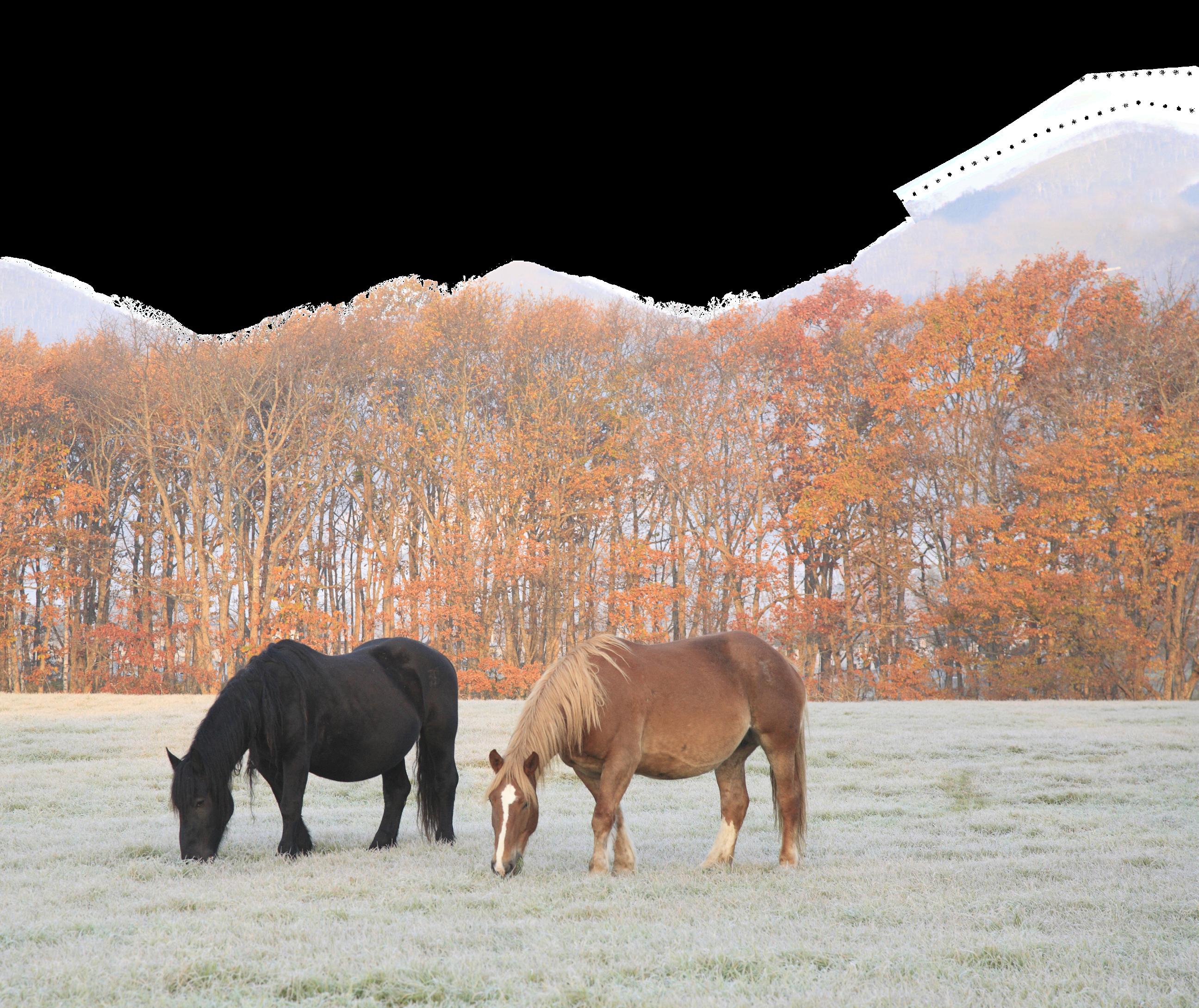
Today mustangs live in feral herds in the United States. They are descended from Spanish horses brought to the country by European settlers in the 16th Century. Many of these early horses escaped from their owners, and others were stolen or traded in deals.

These free horses formed herds and gradually occupied space in the west of the USA. Over time the herds grew in size, but as the country was increasingly settled and ranchers sought out land for cattle, the increased population became a problem, and people started to hunt and poison the horses to get them off their land. In the early 1900s, there were as many as two million mustangs in the USA. Currently, it’s estimated that 50,000 mustangs are still in existence. Most are found on private land, sanctuaries and reservations.
There are now laws in place helping to protect mustangs, and adoption processes have been started to help find safe homes for these special horses.
Mustangs are smaller horses, typically standing between 14 and 15 hands high. They are a versatile breed with successful careers in pleasure riding, ranch work, dressage and more. They are known for being hardy and surefooted and are considered easy to keep.
A mustang that has just been adopted from the feral herds will be reactive and spooky to begin with, but given time these horses become calm and well-mannered. If lovingly and properly trained, these horses make amazing riding horses.

Mustangs come in a wide variety of coat colours. Many are bay and chestnut, but black, grey, pinto, roan and palomino coat colours also occur. They have thick, brush-like manes and forelocks, and their eyes are set further apart than in some other breeds, giving them a distinctive look when seen head-on.
Due to being descended from Spanish Barb Horses, a true Mustang should always have 17 ribs!
Breed name: Lusitano
Other name: Pure Blood Lusitano or PSL (Puro Sangue Lusitano)
Height at withers: Normally between 15.1 and 16.1hh (155-165cm)
Country of origin: Portugal
Ancestors: Iberian and Barb
Colours: Usually grey but can be any solid colour
The Lusitano breed is strongly built, yet hugely agile and for these reasons is often described as the ‘pride of Portugal’. Many people consider the Lusitano to be the Portuguese equivalent of the Andalusian horse (the breed we will look at next month), but there are differences between the two breeds. For example, the Lusitano has a lower-set tail and has a more sloping croup than the Andalusian.

The exact origins of the breed are not known. It is generally thought that the Lusitano originated on the plains of southwestern Iberia, and was used for farm work, riding and by the Portuguese cavalry.

In the 19th and 20th centuries blood from overseas was introduced to make the breed heavier for work on the farms. Many thought this was a great tragedy for the breed, and caused a great loss in quality. Fortunately, a group of breed enthusiasts put together a very strict breed standard, and through a selective breeding programme, were able to restore the original qualities of the breed, including its great balance and superb action for dressage.
The features for which the Lusitano is best known include:
• Athleticism: The Lusitano is known as an agile and strong horse, with excellent natural balance. He has strong, muscular legs and a thick broad chest. The hindquarters are rounded and sloped, which gives a low-set tail and plenty of power behind. He is excellent at many disciplines.
• Handsome features: The head of the Lusitano is beautifully put together. It is Baroque and elegant with a slightly convex profile.
• Fast learners: The Lusitano is very easy to train and adapts well to the demands of various disciplines.
The breed was only formally named ‘Lusitano’ in 1966. The breed was named after the ancient Roman province of Lusitania, which included most of modern-day Portugal. Before 1966, the breed was under the Andalusian name.

The Lusitano was the traditional horse of the Portuguese bull-ring. Agile, intelligent and brave he was considered the perfect horse for bullfighters to ride. The horses were also ridden by companeros, when looked after the bulls that were bred for fighting.
Portuguese vaqueros (Portuguese cowboys) also often ride Lusitanos to herd cattle, using long poles. The poles, called garrochas, form part of elaborate horseback displays and feature in the sport of working equitation.
The breed’s excellent classical dressage skills have seen Lusitanos compete at Olympic level and in the World Equestrian Games as part of the Portgueuse and Spanish teams. The breed is also talented in showjumping and driving, and has taken part in several international events. In fact, the Belgian driving team of Lusitanos have won multiple international titles.

Breed name: Namib Desert Horse (Afrikaans: Namib Woestyn Perd)
Size: 14-15 hands
Coat colour: Bay, chestnut, brown
Place of origin: Namib Desert, Namibia
Ancestors: Domestic horses abandoned in the area in the 1920s
Namib Desert Horses are the only feral horses living in southern Africa. They manage to survive the heat of the Namib Desert, where temperatures can often reach 45 degrees Celsius.
Despite these harsh conditions, the Namib Desert Horses are generally in good condition, except if there is a severe drought in the area.
The most likely ancestors of these horses are a mix of riding horses and cavalry horses, mainly from German breeding programmes, which were released from various farms and camps in the early 20th century, especially during World War 1.
The Namib Desert horse tends to be athletic in appearance with strong bones and clean limbs. They are short-backed and generally look ‘well bred’ in terms of their head, skin and coat. They are usually dark in colour.
Sadly, today, there are fewer than 300 Namib Desert Horses left and many young foals are hunted and killed by predators such as hyenas and jackals.
Work is ongoing to ensure a sustainable future for this special breed.

The Paso Fino is a naturally gaited light horse breed developed from Spanish ancestors. It is known for its presence, smooth-riding gaits and striking appearance.
Paso Finos are prized for their smooth, natural, four-beat ambling gait. They are used for many disciplines, including endurance, but are especially popular for trail riding due to their comfortable paces. For similar reasons, they are also popular mounts for people with back injuries as with them being so comfortable, you can ride all day!

The Paso Fino’s history goes back over 500 years. Christopher Columbus brought mares and stallions to the Dominican Republic during his explorations. These horses included Barb, Spanish, Jennet and Andalusian bloodlines, and the conquistadors rode them as they explored Latin America.
Over time these horses bred and produced new generations with impressive endurance abilities. These horses were elegant and had a smooth-riding comfortable gait. The offspring of these horses became the Paso Fino breed. Landowners in Puerto Rico and Columbia rode the horses on their plantations because they were so comfortable.
During World War II, American soldiers arriving in the Dominican Republic discovered the Paso Fino breed and its smooth gait. At the end of the war, soldiers bought Paso Finos and shipped them to North America. Since then, selective breeding has helped the modern Paso Fino to stay hardy with high endurance and versatility.

The Paso Fino tends to be refined in features but is a compact, strong and athletic horse. The horses stand at an average height of 13 to 15.2 hands (132 to 157cm), but they are very powerful for their size. Paso Finos don’t tend to reach their full height until five years of age. They have convex heads, clean legs and short backs. The cannon bones are pretty short, and the hooves are hard. The Paso Fino often also has a thick mane and tail, which tend to be long and flowing. The breed comes in all colours!
The Paso Fino is a lively horse with a natural will to work. Paso Finos are known to have good temperaments and make great equine partners.
As noted above, one of the Paso Fino’s unique traits is his four-beat gait. This gait is natural to the Paso Fino breed, and the horses can perform it from birth!

The gait is incredibly smooth for the rider since the horse keeps a foot on the ground at all times. Unlike the trot, which creates a lot of up and down motion, the Paso Fino’s shoulders only move slightly up and down, allowing the horse’s back to absorb most of the movement. The result is a rhythmic gait that riders can sit for long distances.
Paso Finos perform this gait at three speeds:
• Classic Fino: This is a collected gait where the horse steps quickly but looks like he is almost dancing on the spot.
• Paso Corto: This is a medium gait with the speed of a trot and is ideal for covering long distances.
• Paso Largo: This is the fastest gait, and the horse can cover a lot of ground very quickly.
We don’t know of any Paso Finos in South Africa, but we would love to find one! If you know of anyone with one of these special horses, please get in touch with our Editor, Lizzie, at lizzie@hqmagazine.co.za

Veredus has introduced the new Olympus Vento boot in a size Small, perfect for ponies!
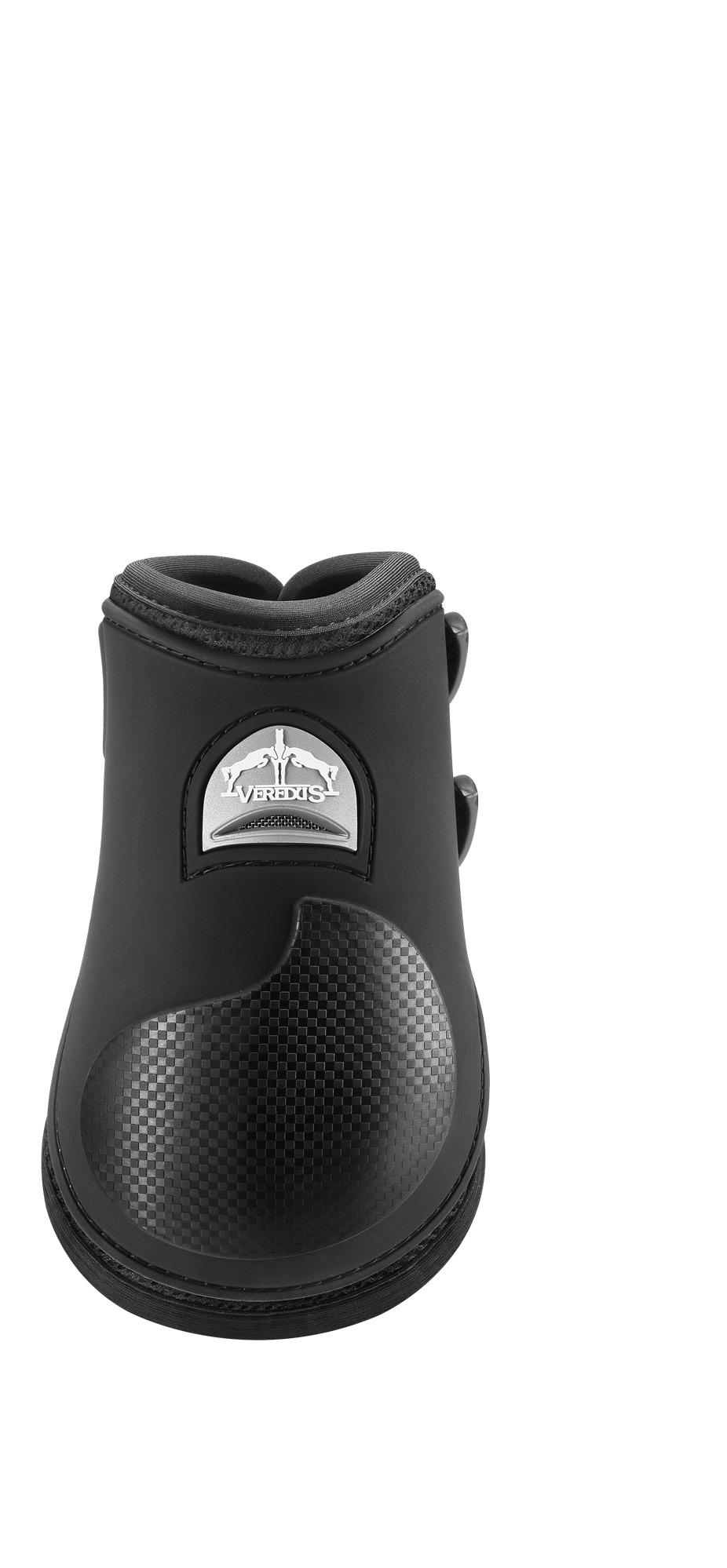

Vento = double ventilation, to look after your ponies legs. The design moves heat released from his or her legs away from their skin – through the technical materials and out of the vent system.
Key features:
• Double ventilation, both vertical and horizontal
• Aerox microperforated neoprene
• 3D mesh ducted fabric
• Strike protection in EVA
• Quick release tips
• Double density anatomic shell
Find the Veredus collection at select Western Shoppe branches or online at www.westernshoppe.com.


